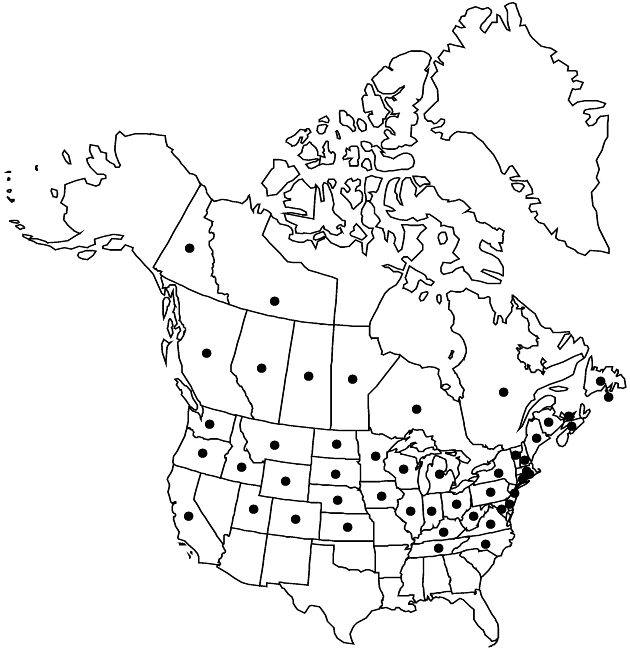Difference between revisions of "Antennaria howellii"
Pittonia 3: 174. 1897.
FNA>Volume Importer |
FNA>Volume Importer |
||
| Line 82: | Line 82: | ||
|publication year=1897 | |publication year=1897 | ||
|special status= | |special status= | ||
| − | |source xml=https://jpend@bitbucket.org/aafc-mbb/fna-data-curation.git/src/ | + | |source xml=https://jpend@bitbucket.org/aafc-mbb/fna-data-curation.git/src/f6b125a955440c0872999024f038d74684f65921/coarse_grained_fna_xml/V19-20-21/V19_648.xml |
|tribe=Asteraceae tribe Gnaphalieae | |tribe=Asteraceae tribe Gnaphalieae | ||
|genus=Antennaria | |genus=Antennaria | ||
Revision as of 19:38, 24 September 2019
Gynoecious (staminate plants very uncommon). Plants (6–)8–35 cm (stems sometimes stipitate-glandular). Stolons 1–9(–12) cm. Basal leaves 1-nerved, spatulate to oblanceolate, spatulate-obovate, narrowly to broadly ovate, or cuneate-oblanceolate, 20–48(–65) × 2.5–20 mm, tips mucronate, faces abaxially tomentose, adaxially green-glabrous or gray-pubescent. Cauline leaves linear, 8–40 mm, distal sometimes flagged (apices acute). Heads 3–15 in corymbiform arrays. Involucres: staminate 6–6.5 mm; pistillate 6–11 mm. Phyllaries (bases sometimes rose) distally white, cream, or light brown. Corollas: staminate 3–4 mm; pistillate 3.5–6.5(–8) mm. Cypselae 0.8–2 mm, ± papillate; pappi: staminate 4–4.5 mm; pistillate 5.5–9 mm. 2n = 56, 84, 140 (under A. neodioica).
Distribution

North America.
Discussion
Subspecies 4 (4 in the flora).
The Antennaria howellii (previously A. neodioica) polyploid complex is highly variable morphologically; four more or less distinct subspecies can be recognized within it. The sexual progenitors of the complex are A. neglecta, A. plantaginifolia, A. racemosa, and A. virginica (see R. J. Bayer 1985). Antennaria marginata may also be a minor contributor to the origins of the complex. A. Cronquist (H. A. Gleason and Cronquist 1991) included members of this complex in A. neglecta; I maintain, because these apomicts are of hybrid polyploid origin from among multiple sexual progenitors, they best not be included within the circumscription of any one sexual progenitor (Bayer 1989d).
Selected References
None.
Lower Taxa
Key
| 1 | Basal leaves green-glabrous adaxially | > 2 |
| 1 | Basal leaves pubescent adaxially (sometimes glabrescent with age) | > 3 |
| 2 | Basal leaves 1-nerved, 20–40 × 6–9 mm; distal cauline leaves flagged; phyllaries distally white or cream | Antennaria howellii subsp. canadensis |
| 2 | Basal leaves 1–3-nerved, 25–40 × 9–12 mm; distal cauline leaves not flagged; phyllaries distally light brown or white | Antennaria howellii subsp. howellii |
| 3 | Basal leaves spatulate to narrowly or broadly obovate (petiolate); stolons 3–8(–12) cm (leaves along stolons almost equal to those in rosettes at ends) | Antennaria howellii subsp. neodioica |
| 3 | Basal leaves cuneate-oblanceolate, spatulate, or spatulate-obovate (without distinct petioles); stolons 4–9 cm (leaves along stolons smaller than in rosettes at ends) | Antennaria howellii subsp. petaloidea |